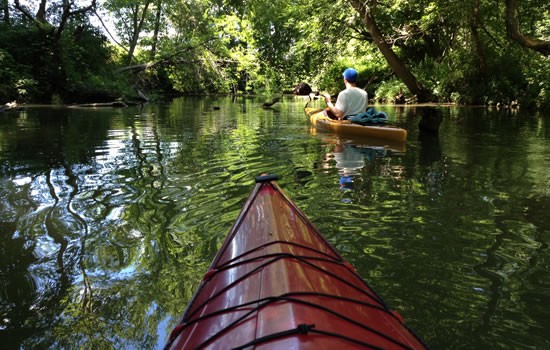― CRAYFISH ―
Recently, people have been reporting seeing many, and larger, crayfish in Keuka Lake, prompting a few questions about them at the KLA meeting in July.
Crayfish (often called crawdads or crabs), are native to Keuka Lake and occur in many freshwater habitats across North America and New York. Over 300 species are native to North America. They have commonly been used as fish bait and as a gourmet food. In southern states (Louisiana and Mississippi) they are commercially grown in large ponds and harvested for use in restaurants all over the United States. In northern climates, such as New York, commercial fishermen catch them from natural waters (or in some cases cultivate them in small ponds) for sale to bait shops and restaurants.
Crayfish can grow as long as 8-10 inches, best eating size is 4 inches or larger. To grow, they must molt their hard shell and form a new, larger (and softer) one. For several hours after molting their shells are soft and they are highly susceptible to predation (fish, raccoons, mink, muskrat, and other crayfish - they're cannibalistic!).
They are inactive in water temperatures below 40 F and don't do well when temperatures exceed 75 F. They do best in clean waters such as in Keuka Lake. They begin to emerge from under rocks to search for food in late afternoon and hunt throughout the night. Scavengers, they mostly eat dead fish and other decaying material. Studies have indicated that crayfish depress zebra mussel populations in streams (by eating the larvae as they form the initial shell?) but obviously crayfish have not made much of an impact on the mussel in Keuka Lake. The mussels also colonize on the shells of live crayfish; speculation is that if enough mussels attach themselves to a crayfish, the crayfish may lose enough mobility, or spend more energy moving around, that it dies.
Crayfish are easily caught by turning over flat rocks in shallow water. They may also be caught in minnow traps (with the opening enlarged to 3-4 inches wide) baited with chicken parts or cans of cat food with holes punched in them to release the scent. A fun way to catch them in modified New England crap traps, which are basically cubes made of ½ inch mesh (hardware cloth) attached to a rigid wire frame (see below). The four walls of the trap are hinged to open like a clamshell and lie flat on the bottom when lowered in the water; bait is tied to the center of the bottom of the trap. Lower the trap from a bridge or dock, and when it is full of crayfish, pull the retrieval cord which causes the sides of the trap to close, trapping the crayfish inside.
Crayfish may be prepared for eating by first blanching them in very hot water for about one minute. After they turn red, remove, drain off hot water, and chill in water to stop the cooking process. Next remove the intestinal tract from the tail by twisting the middle flipper at the end of the tail and pulling - it comes right out. Lightly crack the claws before cooking then boil for 5 minutes to complete the cooking process.
Spiced Crayfish
Cook whole or break off claws and tail for use.
- 5 dozen crayfish
- ½ cup pickling spices
- 1 cup salt
- ½ cup wine vinegar
Put spices in bag or tie in cheesecloth. Add water to cover and bring to boil. Add crayfish. Boil for 5 minutes. Spray or dunk crayfish in cold water (2 minutes). Chill before serving.
Simmered Crayfish
Cook only claws and tail. Simmer cleaned crayfish in water (just enough to cover), butter, salt and pepper for 5 minutes. Best eaten hot.
Deep Fat Fried Tails (the best)
Cut cleaned tails along underside to split all the way and pop out meat. Mix batter (1/2 cup beer, 2 egg whites, enough flour to thicken) until fluffy. Dip tails in batter and drop in deep fat fryer (400 F), take out when browned. Serve with favorite hot sauce.

